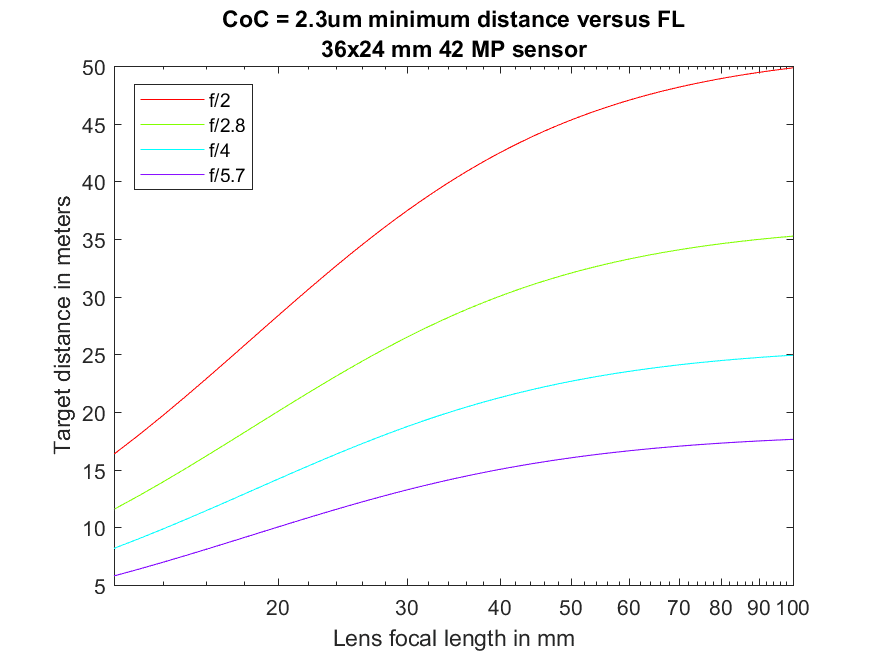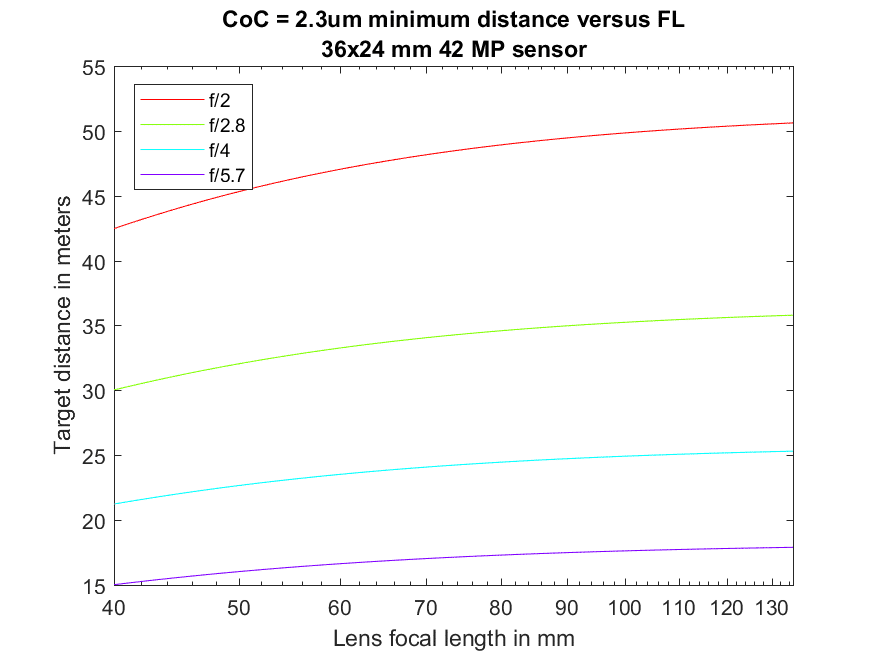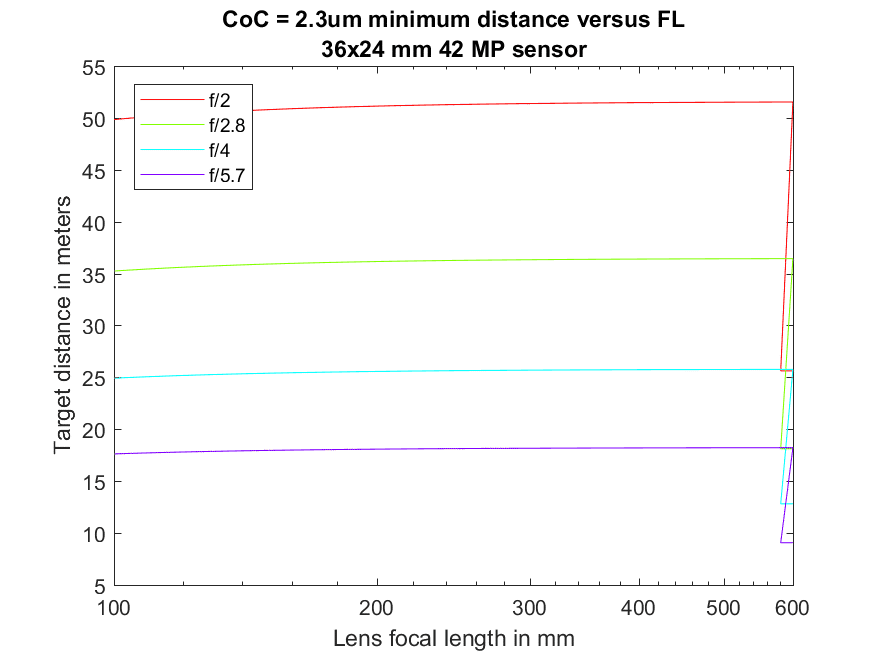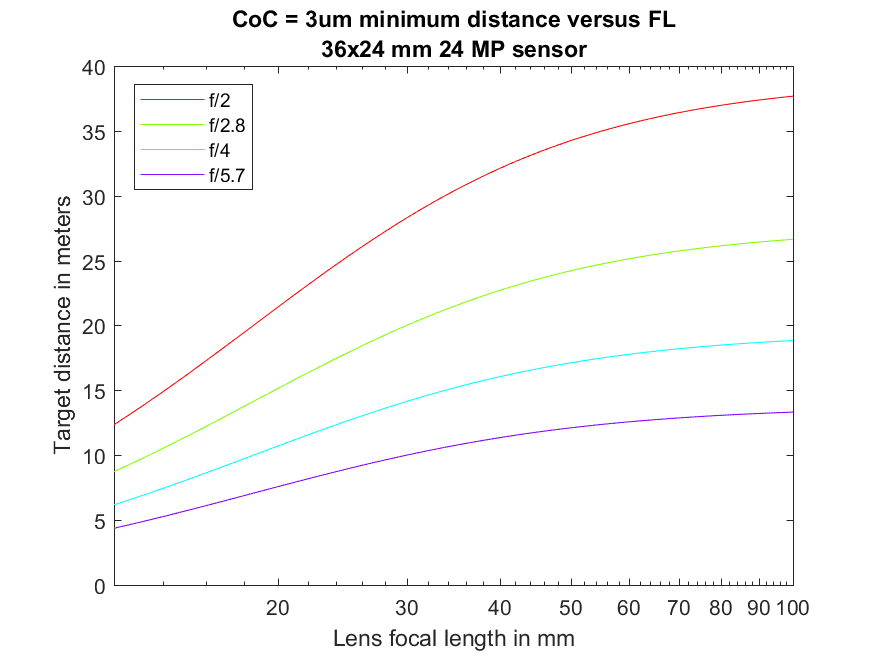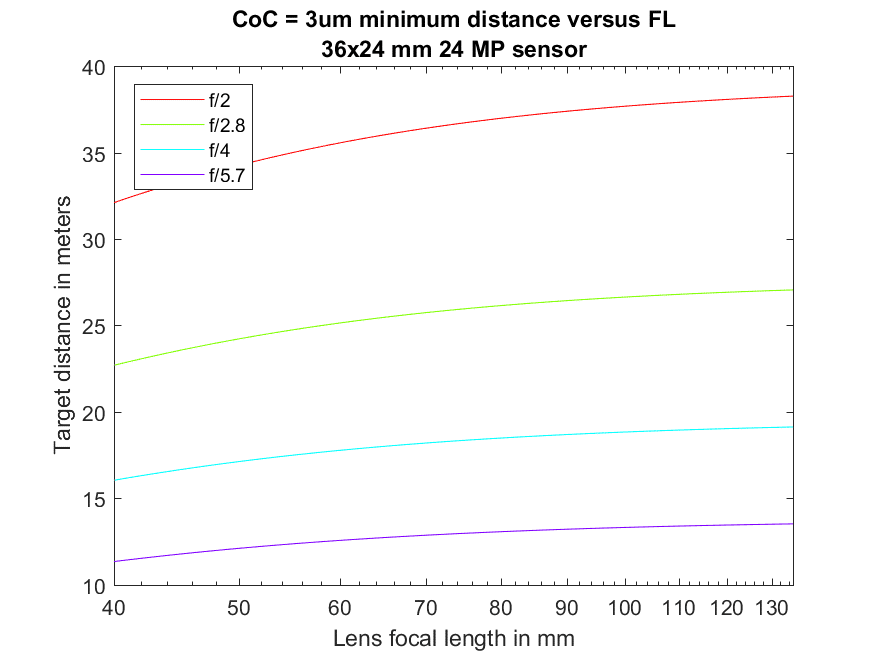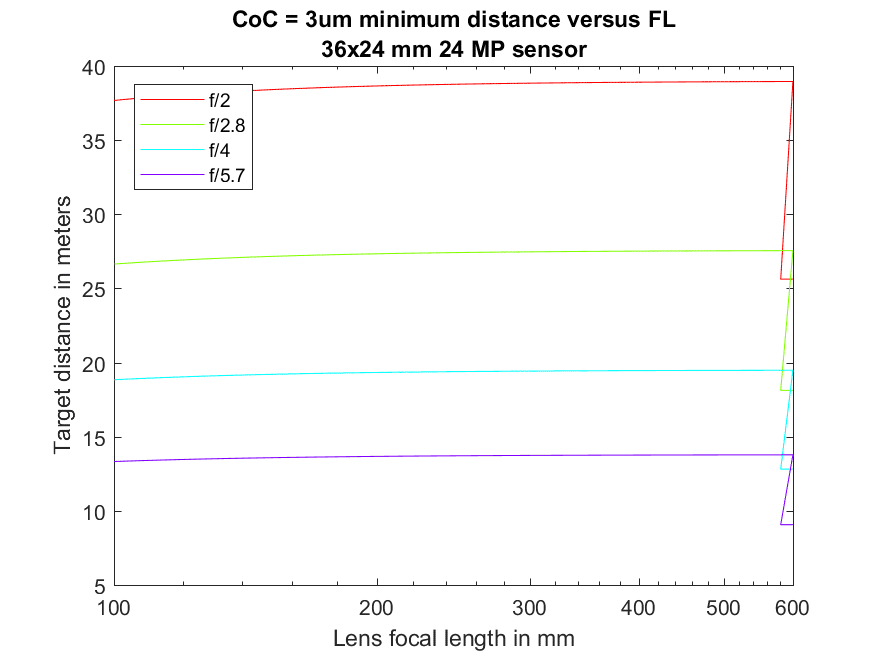This page contains charts of the minimum required camera-to-target distances that provide enough depth of field so that there is acceptable defocus blur with the target at the corners of the image when 24 and 42 megapixel full frame cameras are focused with the target centered. In the case of these charts, the acceptable circle of confusion (CoC) is defined to be one-half the camera’s pixel pitch.
There are three charts for each resolution camera, with the lens focal lengths getting larger as one proceeds further down the page. The 42-megapixel charts are first.
